Unleashing a Classic: The 70th Anniversary of “Lady and the Tramp”
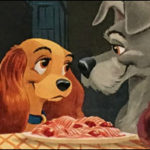
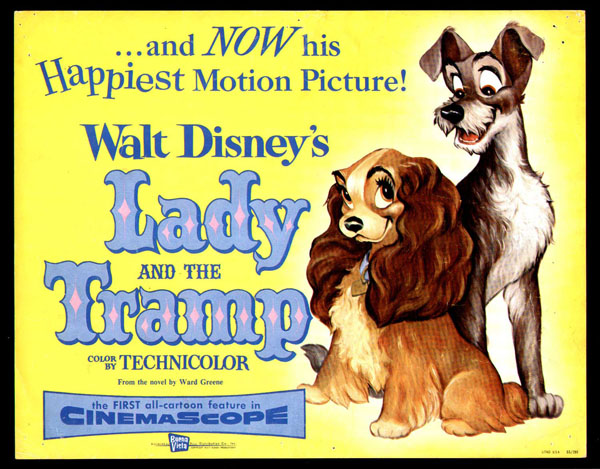
“In the whole history of the world, there is one thing that money can not buy …to wit – the wag of a dog’s tail.”
This quote from humorist and lecturer Josh Billings, which appears at the start of Walt Disney’s Lady and the Tramp, perfectly captures the charm, heart, and emotion that follow and also explains why the film is now considered a classic.
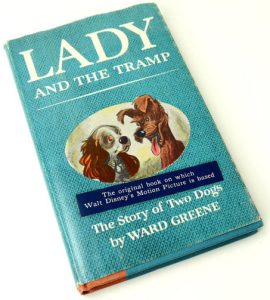 Celebrating its 70th anniversary this month, Disney’s animated feature was produced at a very busy time for Walt and his Studio. Animation, live-action films and television production had become a big part of Disney’s world, and a new venture – Disneyland – was less than one month away from its grand opening.
Celebrating its 70th anniversary this month, Disney’s animated feature was produced at a very busy time for Walt and his Studio. Animation, live-action films and television production had become a big part of Disney’s world, and a new venture – Disneyland – was less than one month away from its grand opening.
Despite all these different forms of entertainment pulling the Studio in multiple directions, with Lady and the Tramp, Walt, and his artists crafted a film filled with care and sentiment that has connected with audiences since its debut.
Production on Lady and the Tramp can be traced back to 1939 when story artist Joe Grant created sketches of his springer spaniel, Lady Nell, interacting with their baby daughter Carol. They caught Walt’s eye, and he asked Grant to craft a story around the artwork.
In 1945, Walt came across the story “Happy Dan, the Cynical Dog” by Ward Greene in Cosmopolitan magazine. He liked the idea of combining Grant’s work with this for the possibilities of a romantic story. Walt also wanted the concept for their movie to come from a book, which led to 1955’s Lady and the Tramp – The Story of Two Dogs, which included a foreword by Walt and illustrations by Joe Rinaldi, taken from storyboards for the film, which was currently in production.
Unfortunately, Grant, who had left the company in 1949 (returning in 1989), never received the credit he deserved on the film.
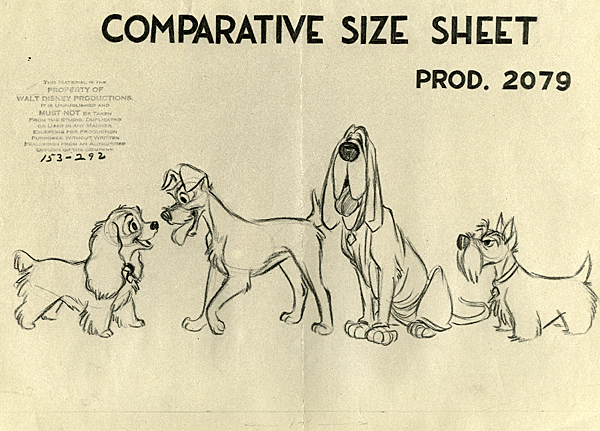
Lady and the Tramp, taking place at the turn of the last century, centers on Lady, a lovely cocker spaniel presented as a Christmas present (in a hat box) from husband Jim Dear to his wife Darling, in the opening scenes of the film. The sequence is inspired by a moment in Walt’s life when he gave his wife, Lillian, a Chow puppy in a hat box.
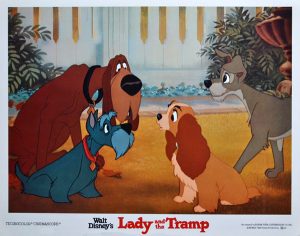 The film then follows Lady from puppy to adult, living a comfortable life with her owners and her neighborhood canine companions, Jock, the Scottie, and Trusty, the bloodhound. Her world changes when Jim Dear and Darling welcome a baby, and then when she meets Tramp, a stray mutt, who shows Lady what life can be like off a leash.
The film then follows Lady from puppy to adult, living a comfortable life with her owners and her neighborhood canine companions, Jock, the Scottie, and Trusty, the bloodhound. Her world changes when Jim Dear and Darling welcome a baby, and then when she meets Tramp, a stray mutt, who shows Lady what life can be like off a leash.
From here, a romance starts on a lovely “Bella Notte” evening, and there are adventures in which Lady finds herself in the pound. Jim Dear and Darling’s fussy Aunt Sarah comes to visit, and Tramp saves the baby from a rat who makes its way into the house.
Lady and the Tramp proved to be a true showcase for Walt’s legendary animators, the Nine Old Men. Notably, Frank Thomas’ animation of Tramp during the iconic spaghetti scene showcases the character’s personality as he falls in love with Lady.
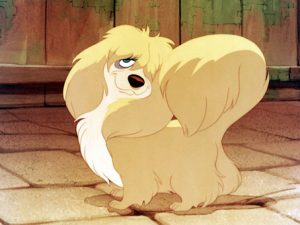 There’s also Eric Larson’s tour-de-force animation of Peg, the show dog who struts her way through the number “He’s a Tramp” in the pound while backed up by the other stray dogs.
There’s also Eric Larson’s tour-de-force animation of Peg, the show dog who struts her way through the number “He’s a Tramp” in the pound while backed up by the other stray dogs.
The character and the song are among a number of songs in the film that were contributed by singer Peggy Lee, who wrote them with Sonny Burke. They include “Bella Notte,” “He’s a Tramp,” and “The Siamese Cast Song.”
Not only did the talented Lee help compose the songs, but she also voiced several of the characters, including Darling, Peg, and Aunt Sarah’s pet cats, Si and Am. In a well-publicized lawsuit, Lee sued the Disney Company in 1988, following the release of Lady and the Tramp on home video. Lee stated that she retained the rights to transcriptions of the music and that videotape editions were transcriptions. She won the case in 1991 and was awarded $2.3 million.
In addition to Lee, other voices in the film included Barbara Luddy as Lady, Larry Roberts as the Tramp, Bill Baucom as Trusty, Bill Thompson as Jock, Verna Felton as Aunt Sarah, Stan Freberg as a Beaver that Lady and the Tramp meet at the zoo, and The Mellomen as the dogs Lady meets at the pound. Also, listen for stalwart voice actor Dallas McKennon as several characters in the film.
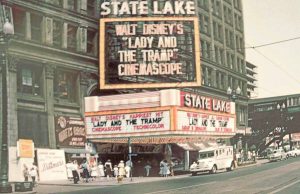 Another aspect that sets Lady and the Tramp apart from previous Disney animated features is that it was filmed in Cinemascope. This proved a challenge for the artists, who had to rethink the layout and staging in the then-new widescreen process.
Another aspect that sets Lady and the Tramp apart from previous Disney animated features is that it was filmed in Cinemascope. This proved a challenge for the artists, who had to rethink the layout and staging in the then-new widescreen process.
Released on June 22, 1955, Lady and the Tramp connected with audiences and critics. Edward Schallert in The Los Angeles Times called the film “…delightful, haunting, charmed fantasy that is remarkably enriched with music and, incidentally, with rare conversations among the canine characters.”
In the years since its release, the feature has only grown in its appreciation. When Lady and the Tramp was reissued to theaters for the holiday season of 1986, critic Gene Siskel, reviewing the film on the show, Siskel & Ebert & The Movies said that he loved the film when he was younger and confessed that he had a cocker spaniel when he was a child. “That was my first dog. I thought she was like Lady,” said Siskel, adding, “Missy was her name. God bless her soul wherever she may be this holiday season.”
This is evidence of the close connection so many have with Lady and the Tramp, still seventy years since its release – a story of romance, family, acceptance, and, yes, the joy and unconditional love signified by “the wag of a dog’s tail.”
